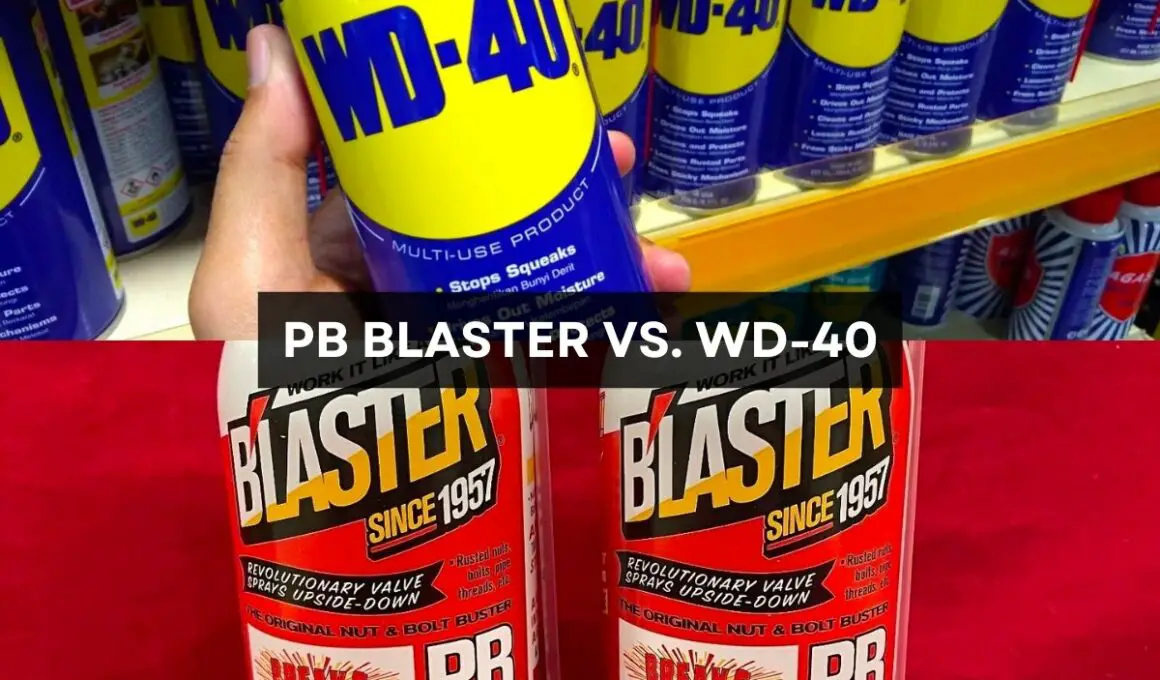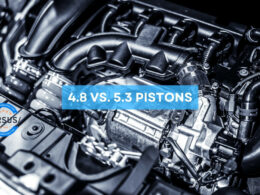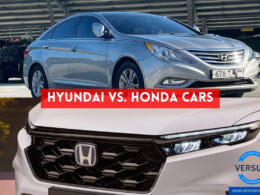In This Article Show
In mechanics, having the right tools and products on hand can mean the difference between a quick, successful repair and hours of unnecessary frustration. But it’s not just about the wrenches and jacks; sometimes, the smallest can in your toolbox can make all the difference.
I say this as a blogger and mechanic with over 13 years of hands-on experience. And, in my many years of tinkering and repairing, two products have consistently sparked debates in workshops worldwide: PB Blaster and WD-40.
The main difference between PB Blaster and WD-40 is that PB Blaster is specifically formulated for breaking free rusted or frozen parts with deep penetration, while WD-40 is a multi-purpose product designed primarily for water displacement and light lubrication.
Now, you might wonder, “Why would such a seasoned mechanic bother writing about these sprays?” Understanding the nuances between these two power-packed cans can make your life significantly easier. So, let’s delve in, break down the specifics, and help you make an informed decision for your next repair or maintenance job.
Trust me, with more than a decade under my belt, I’ve seen first-hand how the choice between these two can affect outcomes. Let’s get into it.
What Is PB Blaster?
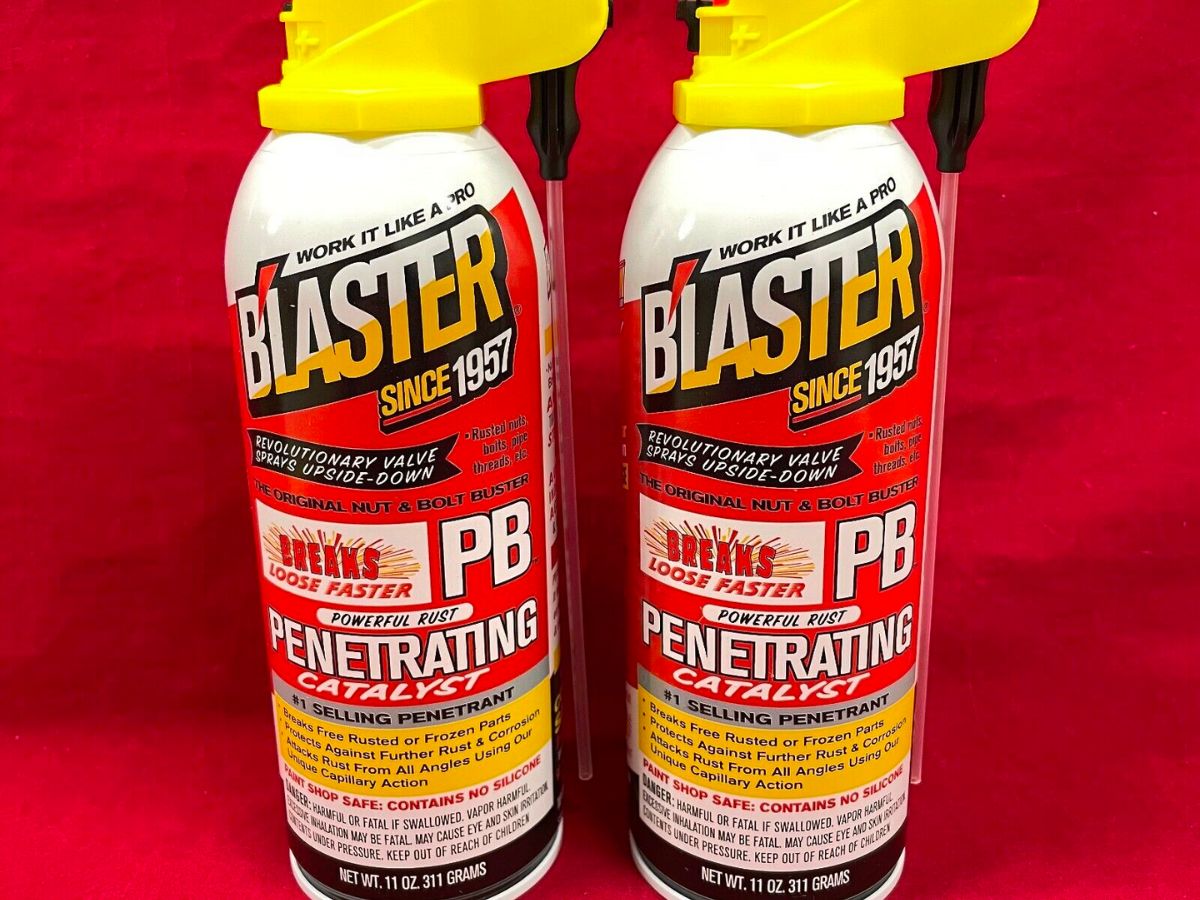
As a mechanic with over 13 years of hands-on experience, I’ve encountered my fair share of stubborn, rusted bolts and components that refuse to budge. When brute force doesn’t work, I often reach for a trusted ally: PB Blaster.
PB Blaster, commonly referred to as “Blaster,” has existed since the 1950s. It was formulated to conquer the rust and corrosion found in the industrial areas of the Midwest U.S. The goal?
A product that could penetrate, lubricate, and protect better than anything on the market. And in many mechanics’ opinions, including mine, they succeeded. While Blaster is renowned for breaking free rusted or frozen parts, its utility doesn’t end there. Its penetrating capabilities make it a go-to for:
- Loosening stuck hardware (nuts, bolts, screws).
- Freeing up hinges and latches.
- Helping to dissolve and remove gunk, grease, and grime.
- As a pre-treatment before starting on a repair job to ease the process.
Pros And Cons Of PB Blaster
Too many mechanics I’ve worked with over the years, PB Blaster is often the secret sauce that gets the job done when everything else fails.
It’s one of those tools in my toolbox that has stood the test of time despite all the technological advancements and new products on the market. However, just like every product, the PB blaster comes with its unique highs and lows;
Pros
- Superior Penetration: In my experience, PB Blaster often works where other penetrating oils give up. It seems to seep deeper into the tiniest of crevices.
- Long-Lasting: A single application can have effects that last for days, making it perfect for those jobs that need repeated attention.
- Cost-effective: Considering its performance, the price point offers great value to professionals and DIY enthusiasts alike.
Cons
- Strong Odor: The distinct smell of PB Blaster can be overpowering for some. It’s always wise to use it in a well-ventilated area.
- Not a General-Purpose Lubricant: While fantastic for penetration and rust busting, it’s not always the best choice for general lubrication tasks.
What Is WD-40?
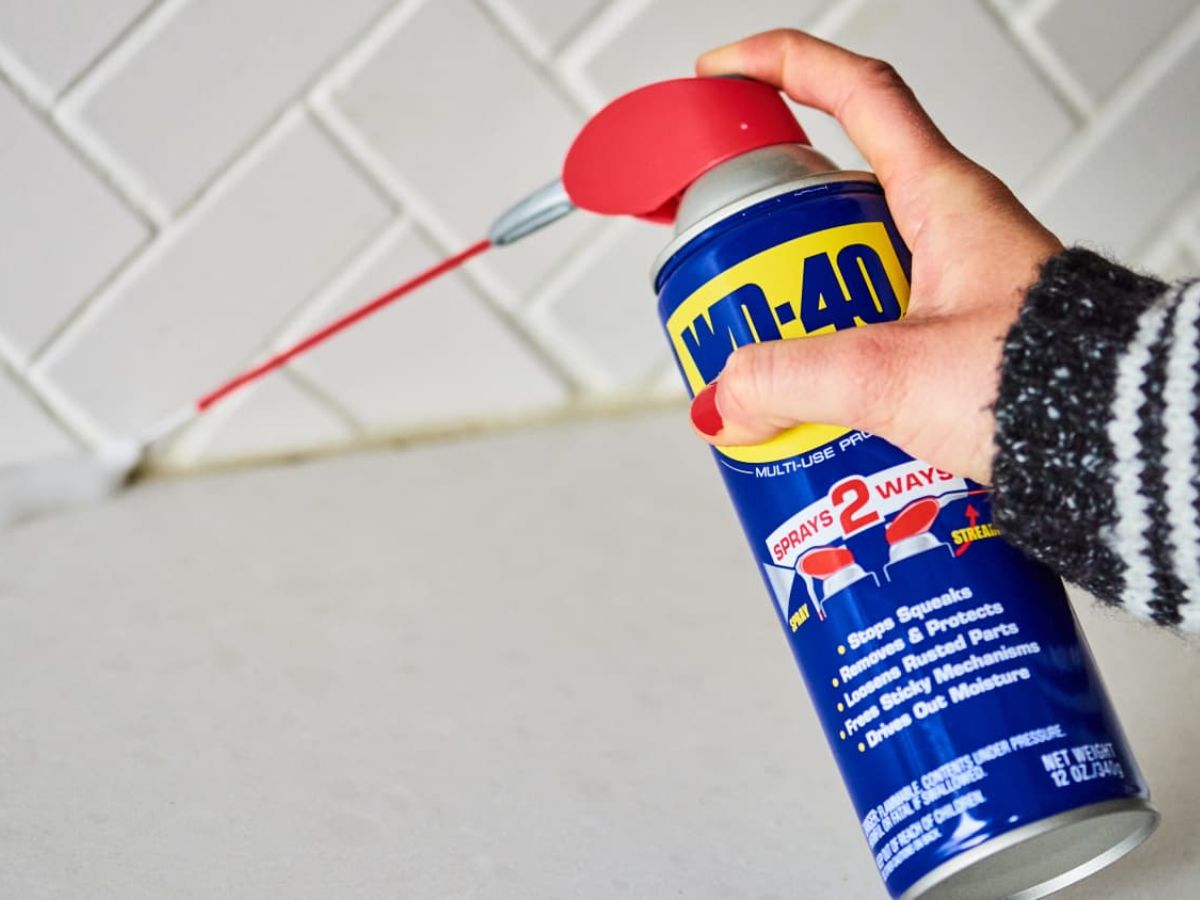
There’s scarcely a household or garage across the country that doesn’t boast a blue and yellow can of WD-40. This iconic aerosol has been a staple for many, and in my 13 years as a mechanic, I’ve seen it utilized in more ways than one could imagine.
WD-40, which stands for “Water Displacement, 40th Formula,” has an intriguing origin story. Developed in 1953 by the Rocket Chemical Company, it was initially intended to prevent missile corrosion by displacing water.
This humble invention soon found its way into consumer hands, becoming the household name it is today. While many see WD-40 as a do-it-all magic spray, it’s essential to recognize its primary functions:
- Displacing moisture from electrical systems.
- Loosening rust-to-metal bonds makes it easier to free up rusted components.
- Protecting metal surfaces from rust and corrosion.
- Cleaning various surfaces from grease, tar, and adhesives.
- Over the years, users have found countless other applications for WD-40, from removing gum stuck to shoes to easing squeaky door hinges.
Pros And Cons of WD-40
Throughout my career as a mechanic, WD-40 has been a reliable companion, not just for its intended uses but for the plethora of unexpected situations where its unique formula made all the difference. However, it has its flaws and strengths to take note of;
Pros
- Versatility: It’s not just a penetrating oil. WD-40 can be used in myriad ways around the home and garage.
- Easy Availability: You can find WD-40 in virtually any store, from automotive shops to your local grocery.
- Safe on Many Materials: WD-40 can be safely applied to most materials without causing damage, making it a reliable choice for various tasks.
Cons
- Not a Heavy-Duty Lubricant: WD-40 might not be the best choice for prolonged lubrication tasks. It evaporates relatively quickly compared to dedicated lubricants.
- Flammability: The propellants in WD-40 make it highly flammable, so it’s crucial to use it cautiously, especially near open flames.
Comparative Analysis Of PB Blaster And WD-40
While both PB Blaster and WD-40 are often found side by side on the shelves of workshops and garages, understanding their distinct characteristics can help you make an informed choice for your specific needs.
1. Performance In Rust Removal
PB Blaster
This product is renowned for its superior rust penetration capabilities. If heavily rusted components refuse to budge, PB Blaster is usually the go-to choice. Its formula is designed to penetrate deep, breaking rust-to-metal bonds effectively.
WD-40
While WD-40 does help in loosening rusted parts, its primary function is water displacement and not deep rust penetration. It’s better suited for light rust or preliminary treatment.
2. Lubrication Abilities
PB Blaster
While it excels in penetrating rusted parts, PB Blaster isn’t primarily a lubricant. It offers temporary lubrication but might not be the best for tasks requiring prolonged lubrication.
WD-40
The lubrication provided by WD-40 is also temporary. It can help reduce friction momentarily, but neither WD-40 nor PB Blaster would be the best choices for tasks requiring lasting lubrication.
3. Durability
PB Blaster
Its effects can last for days, especially when it comes to keeping components free after breaking through rust. This makes it ideal for tasks that might need repeated attention over a short span.
WD-40
WD-40 evaporates relatively quicker than PB Blaster. While it offers immediate results, re-application might be necessary for ongoing tasks.
4. Safety & Environmental Impact
PB Blaster
Its strong odor underscores its importance in well-ventilated areas. As for environmental concerns, like many chemicals, proper disposal and limiting overspray can reduce its environmental impact.
WD-40
Being highly flammable, safety precautions are paramount when using WD-40, especially near open flames or high temperatures. It is less odorous than PB Blaster and is generally safe on many materials without causing damage.
5. Price Comparison
PB Blaster
Generally considered cost-effective given its performance, especially for those challenging rusted components.
WD-40
Widely available and usually priced reasonably, it offers good value given its versatility and range of applications.
In conclusion, while there’s a significant overlap in the uses of PB Blaster and WD-40, each shines in its own domain. The specific task and its challenges should guide your choice between the two.
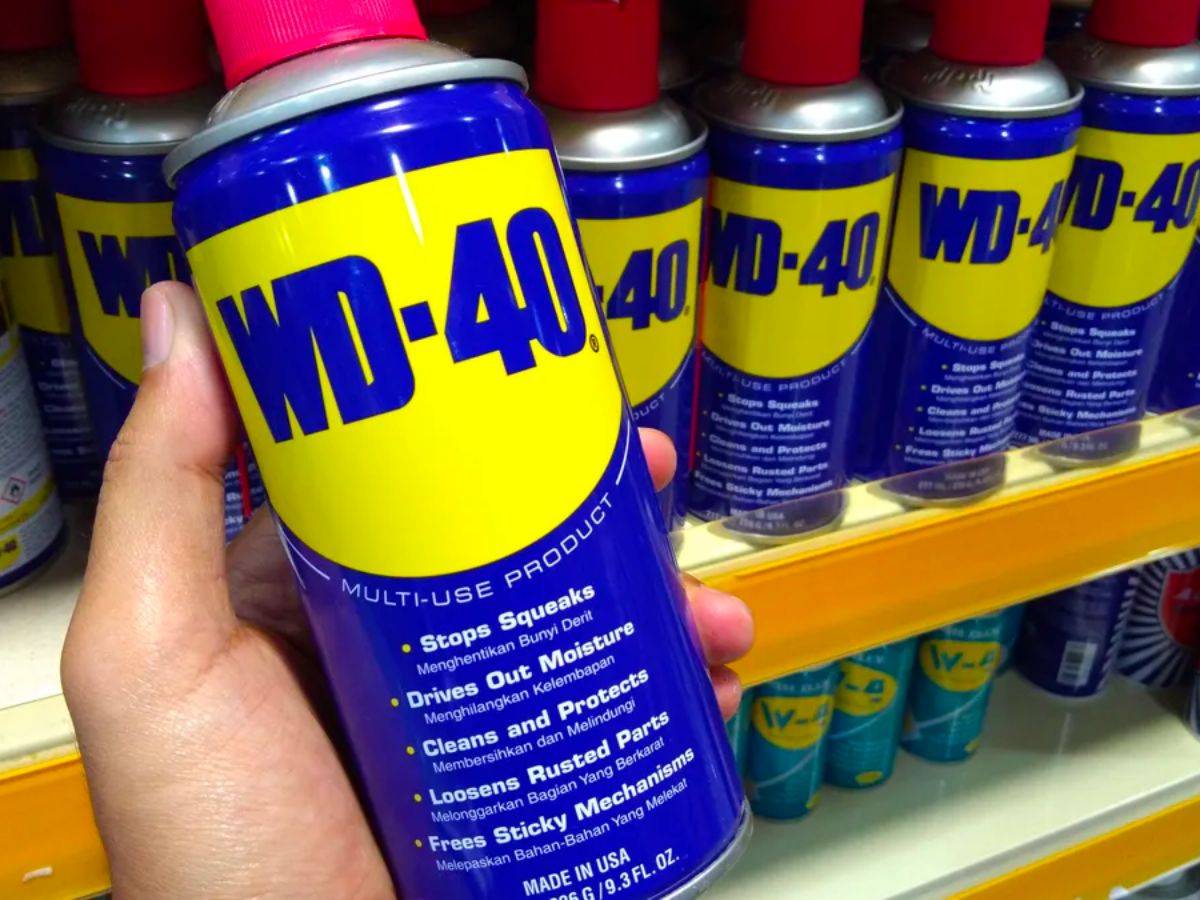
Tips For Usage Of PB Blaster & WD-40
Whether you’re a seasoned professional or a DIY enthusiast, effectively using products like PB Blaster and WD-40 can greatly improve your results. Here’s a rundown of best practices and safety precautions:
1. Safety Precautions
Always wear protective gloves and safety goggles. Both products can irritate the skin and eyes upon contact. Due to their strong odors and the release of fumes, always use these products in a well-ventilated area. This is especially crucial for PB Blaster.
Also, remember that these products, especially WD-40, are flammable. Keep them away from open flames or hot surfaces, and store both products in a cool, dry place away from children and pets.
2. Application Techniques
Direct your spray precisely to the affected area when dealing with rusted or stuck parts. Let it sit for a while. For heavily rusted parts using PB Blaster, allowing it to penetrate overnight can be effective.
Always use the straw as both products often come with a straw attachment. This is especially useful for targeting hard-to-reach areas or when precision is required. It’s easy to go overboard, but a few sprays are often sufficient. Over-application can lead to wastage and potential mess.
3. Storage & Maintenance
Ensure the cap is always securely placed back on the can to prevent accidental spills or sprays. Store the cans upright. This will reduce the risk of leakage and ensure easy application the next time you use them.
While these products have a long shelf life, checking if they’ve been unused for several years is good practice. Look for any separation or unusual consistency before use.
4. General Tips
Especially with WD-40, if you’re venturing beyond its standard applications, always test on a small, inconspicuous area first. This will ensure no unwanted reactions or damages. After usage, give the nozzle a quick wipe. This prevents buildup and ensures a consistent spray the next time you use it.
Using PB Blaster and WD-40 effectively can save time, reduce effort, and ensure your tasks go off without a hitch. Remembering these tips and best practices guarantees you the best of both products.






